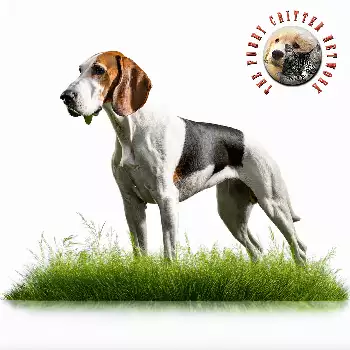The history of the English Foxhound stretches back over four centuries, making it one of England's oldest and most carefully documented breeds. The breed's development began in the late 16th and early 17th centuries when fox hunting evolved from a practical necessity for protecting livestock into an organized sporting pursuit among the English aristocracy. During this period, dedicated hunters began systematically breeding dogs specifically for fox hunting rather than relying on general hunting dogs or modified staghounds that had previously been used for larger game.
The foundation of the modern English Foxhound came from careful crossbreeding of several different hound types that existed in Britain during the 1600s and 1700s. The primary contributors included the Southern Hound, a slower but incredibly scent-gifted breed; the North Country Beagle, which provided speed and agility; and various Terrier crosses that added courage and tenacity. The St. Hubert Hound and Talbot Hound, both now extinct, also contributed their superior scenting abilities and distinctive voice to the developing breed.
The most significant period in English Foxhound development occurred during the 18th century when formal foxhound packs began to be established throughout England. Each region's pack developed slightly different characteristics based on local terrain, game, and the preferences of the Master of Foxhounds who controlled the breeding program. The Belvoir, Brocklesby, and Old Berkeley packs became particularly influential, with their bloodlines forming the foundation for many modern English Foxhounds. These early pack masters maintained meticulous breeding records, many of which survive today and provide invaluable insight into the breed's development.
The sport of fox hunting reached its golden age during the 19th century, and with it came the most intensive period of English Foxhound breeding and refinement. During this time, the breed achieved the consistent type and performance characteristics that define it today. The establishment of the Masters of Foxhounds Association in 1881 brought standardization to breeding practices and helped maintain quality across different packs throughout England, Wales, and Scotland.
Record-keeping became increasingly sophisticated during the Victorian era, with the first formal English Foxhound studbooks being established. The English Stud Book, begun in the 1880s, documented bloodlines with unprecedented detail, tracking not only parentage but also performance characteristics, physical attributes, and working abilities of individual hounds. This systematic approach to breeding produced remarkable consistency in type and performance across different packs and regions.
The breed's international expansion began in the 18th and 19th centuries when English Foxhounds were exported to establish fox hunting in other countries. The most significant export was to colonial America, where English Foxhounds formed the foundation stock for what would eventually become the American Foxhound. Shipments also went to Canada, Australia, and other British colonies, though many of these populations were later crossbred with local dogs and evolved into distinct regional types.
World War I marked a significant disruption in English Foxhound breeding, as many packs were disbanded and kennels closed due to wartime restrictions and economic hardship. Some historic bloodlines were lost forever during this period, though dedicated pack masters worked to preserve the most valuable breeding stock. The interwar period saw efforts to rebuild pack numbers and restore lost bloodlines, often through careful outcrossing with remaining quality stock.
World War II brought even greater challenges, with rationing, bombing, and widespread social disruption affecting fox hunting throughout Britain. Many packs struggled to maintain adequate numbers of hounds, and some were forced to destroy entire kennels due to food shortages. However, the most dedicated pack masters found ways to preserve their best bloodlines, often at great personal sacrifice, ensuring the breed's survival through this difficult period.
The post-war period brought gradual recovery, though fox hunting faced increasing criticism and social pressure throughout the latter half of the 20th century. Despite these challenges, English Foxhound breeders continued their work, often shifting focus toward maintaining the breed for its historical significance and potential future roles rather than solely for hunting purposes. The introduction of drag hunting and other artificial scent pursuits provided new outlets for the breed's capabilities while addressing ethical concerns about traditional fox hunting.
The Hunting Act of 2004 in England and Wales fundamentally changed the landscape for English Foxhounds by banning traditional fox hunting with hounds. This legislation forced pack masters and breeders to adapt their programs, focusing on drag hunting, trail hunting, and other legal alternatives that could still utilize the breed's natural abilities. Many packs transitioned to these activities, helping preserve English Foxhound populations and breeding programs despite the ban on their traditional purpose.
Modern English Foxhound breeding faces unique challenges, including maintaining genetic diversity in a relatively small population, preserving working abilities in an era of reduced hunting opportunities, and finding new roles for a breed specifically developed for a now-restricted activity. Contemporary breeders work closely with geneticists to maintain healthy breeding programs while exploring the breed's potential in other activities such as search and rescue work, competitive tracking, and family companionship.
Today's English Foxhounds represent the culmination of over 400 years of selective breeding for specific physical and mental characteristics. While their traditional role has largely disappeared, the breed maintains the stamina, intelligence, pack mentality, and scenting ability that made them legendary hunters. Modern breeding programs strive to preserve these characteristics while adapting the breed for contemporary roles and ensuring their continued survival as a living piece of British sporting heritage.

